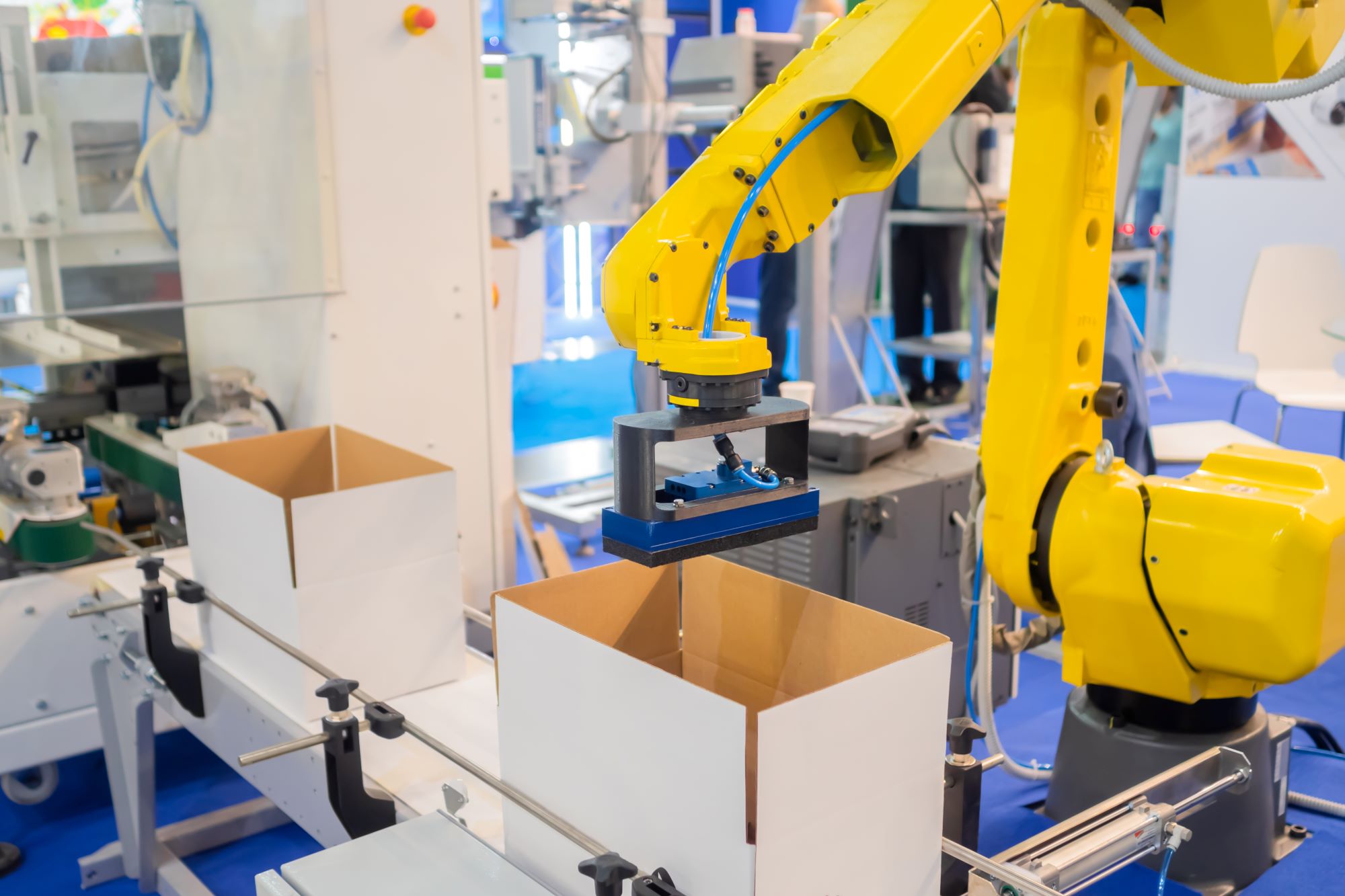
Packaging plays a significant role in showcasing a product’s value proposition. It’s a visual representation of the brand’s promise, positioning, and the unique benefits it offers to consumers. Visual elements like colors, typography, and imagery can convey a product's value.
Brands can use packaging to evoke emotions and connect with consumers. They can communicate their distinction through design elements like packaging shapes, features, or informative labeling. However, using effective packaging practices is crucial to make them more sustainable.
Using the correct equipment is essential for companies to guarantee productivity, precision, and quality in their packaging procedures. Meanwhile, automated machinery, like filling, sealing, and labeling systems, can handle tasks faster than manual labor. It can increase efficiency by up to 30% and reduce production time.
Packaging equipment ensures consistent and accurate results, reducing human error and variations in quality. According to Machine Process Design Inc, using the right packaging equipment can lead to long-term cost savings. Equipment designed for specific packaging needs helps reduce waste, saving on materials and costs.
Here's how equipment design promotes sustainable packaging practices:
- Improves Efficiency
Efficient equipment design is critical for optimizing material usage and minimizing waste in industrial processes. Here are some reasons why:
- Equipment with precise mechanisms uses the right amount of material for each packaging task. Studies show you can have up to 40% savings.
- Well-designed equipment minimizes waste in packaging operations by preventing spills, leaks, and excess material usage. Accurate dosing and filling mechanisms save resources and reduce disposal and handling costs.
- Using materials efficiently leads to cost savings, involving raw material procurement, storage, transportation, and disposal.
- Efficient material usage impacts packaging operations’ environmental impact by reducing carbon footprint.
- Precise measurements and controlled processes keep packaging differences to a minimum. As a result, products are more reliable and of high quality, making customers happier and reducing the number of recalls or complaints.
More and more companies drive advancements in equipment design, contributing to a more sustainable future for industries worldwide.
- Waste Reduction
Investing in equipment supporting sustainable packaging practices can help protect the environment. Choose equipment that uses eco-friendly materials, reduces energy consumption, and minimizes waste. Sustainable packaging aligns with consumer preferences and contributes to environmental conservation.
Efficient equipment design can reduce waste by minimizing damage or contamination during packaging processes. It can also help businesses choose environmentally friendly, recyclable, or biodegradable materials for packaging.
Here’s how equipment design can reduce waste:
- Efficient sorting and recycling mechanisms streamline packaging waste separation and recycling.
- Automated sorting of materials like plastics, paper, and metals promotes effective waste management and recycling.
- Reducing packaging waste production and disposal contributes to a cleaner, more sustainable environment.
Equipment design is crucial for supporting circular economy principles. A circular economy aims to minimize waste and keep materials in circulation. Machines that use recyclable materials and facilitate recycling can reduce waste in a sustainable way.
- Process Optimization
Well-designed equipment can make packaging processes more efficient. Automated machinery can increase the speed of a production line while cutting down on idle time and energy use. Robotic systems can also improve workflow by cutting unnecessary movements and making the process more efficient.
Meanwhile, equipment designed for durability and ease of maintenance reduces the frequency of replacements and repairs. When machines are reliable and last longer, they can help you save money and optimize processes.
On the other hand, equipment design is critical in fostering innovation and collaboration. Manufacturers, engineers, and packaging experts can collaborate to create innovative equipment solutions that promote sustainable practices. Some examples include innovations such as renewable energy integration and smart automation systems.
- Regulatory Compliance
Equipment design must comply with regulatory standards and environmental impact requirements. Regulations like energy efficiency standards, emissions control, and waste management ensure that the equipment meets recognized sustainability benchmarks.
Proper packaging equipment, like shrink wrappers, blister sealers, and protective systems, ensures product safety and protection. It seals, protects, and preserves products during the packaging process. These secure solutions minimize damage, tampering, and contamination risks.
Well-designed equipment can help control emissions and minimize air and water pollution. For example, packaging machines can have exhaust and filtration systems to control emissions made during packaging. Equipment design helps improve air quality and protect the environment by reducing emissions.
Using appropriate equipment helps companies meet industry regulations and packaging standards. For instance, pharmaceutical companies require strict labeling, serialization, and tamper-evident requirements. Non-compliance can lead to legal repercussions and damage to the brand's reputation.
Conclusion
Equipment design has a significant effect on sustainable packaging practices. It maximizes the use of materials, minimizes waste, and improves the efficiency of the process. It helps businesses meet sustainability goals and positively affects the environment.
Investing in suitable equipment for sustainable packaging is crucial for companies. It can help them achieve efficiency, accuracy, cost savings, product safety, scalability, compliance, and environmental sustainability. Also, it can help them streamline processes and maintain quality standards.






